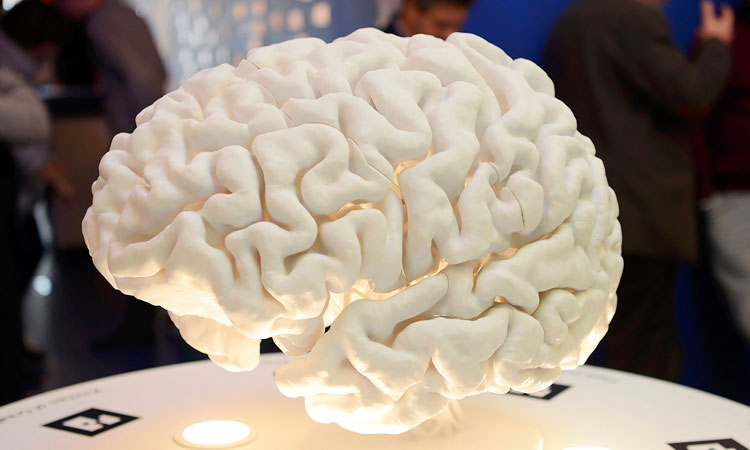Taking control of our brain through diet
- Like
- Digg
- Del
- Tumblr
- VKontakte
- Buffer
- Love This
- Odnoklassniki
- Meneame
- Blogger
- Amazon
- Yahoo Mail
- Gmail
- AOL
- Newsvine
- HackerNews
- Evernote
- MySpace
- Mail.ru
- Viadeo
- Line
- Comments
- Yummly
- SMS
- Viber
- Telegram
- Subscribe
- Skype
- Facebook Messenger
- Kakao
- LiveJournal
- Yammer
- Edgar
- Fintel
- Mix
- Instapaper
- Copy Link
Posted: 29 June 2022 | Denis Burdakov | 1 comment
Scientists are diving deep into the cells of our brains to discover what keeps us awake at night and how what we eat could be controlling our willpower. Denis Burdakov explains more.


Credit: Hanson Leatherby Photography
When was the last time your racing thoughts kept you from sleeping, or you skipped your exercise routine? While we take pride in being the masters of our own free will, in practice we often fail to achieve even the simple things in life that are important for our wellbeing. Willpower alone is rarely sufficient to flip our brains between active and passive states. Indeed, about one in four people suffer from insomnia for this reason. The brain signals responsible for this operate in our subconscious.
Wake up cells
In the past two decades, scientists have learned a lot about how these subconscious signals work. In humans, as well as other animals, the critical wake-up signal was found to come from orexin/hypocretin neurons, a small cluster of cells in the deepest area of the brain, the hypothalamus. The discovery of orexin cells in 1998 transformed our understanding of brain state control, as loss of these cells was found to cause the sleep disorder narcolepsy. Narcolepsy is a fragmentation of the brain’s state, characterised by abnormally frequent transitions between brain states, and an inability to sustain neither sleep nor wakefulness. Conversely, orexin cell stimulation produces wakefulness and increases physical activity.
The discovery of orexin cells seems like great news for people who would like better control over their brain state. By controlling our orexin cells, we could theoretically control our brain state at will; turning the cells off when we want to sleep and turning them on again when we want to be active.
Unfortunately, however, orexin cells work a bit like our hearts or other organs – in the subconscious. Marching to the beat of their own drum, they operate outside our direct, conscious control; thus, we are not aware of what our orexin cells are doing and cannot consciously change them.
…Or can we?
Tapping into our unconscious
The link between orexin cell activity and brain state is so strong that they are an irresistible research target for scientists like myself and my Neurobehavioural Dynamics research team at ETH Zurich. We seek to understand how people can gain better control of their behaviour and ultimately their consciousness. We hope that, by using miniature electrical probes or genetically targeted optical sensors to observe how and when orexin cells switch on and off, it might be possible to decipher how to influence brain state control through our conscious, everyday choices, like the foods we choose to eat.
We are what we eat – likely too sweet
We found that orexin cells are autonomous generators of wake-stimulating electrochemical signals, but the intensity of these signals can be tuned by interconnected neural circuits, as well as by our diet. Specifically, orexin cells are uniquely sensitive to changes in the body’s levels of certain dietary macronutrients, such as sugar and some amino acids.


If we could control our orexin cells, we could theoretically dictate our sleeping patterns – switching the cells off when we want to sleep and on when we want to be active
Glucose acts as a potent inhibitor of orexin cells. When ambient glucose levels rise, orexin cells stop generating their wake-promoting signals, due to the sugar-triggered openings in tiny pores, called potassium channels, in the orexin cell membrane. Potassium channel activity moves orexin cells into an ‘electrically stubborn’ state, making it difficult for other neurons to stimulate them. These electrical changes within the brain are associated with a decrease in voluntary physical activity, and with entering into lethargic, low-activity states. Remarkably, this transition to inactivity induced by ingesting glucose is absent in subjects without orexin neurons, as seen in people with narcolepsy. In these subjects, glucose does not reduce physical activity, demonstrating that orexin cells are a critical link between sugar and inactivity.
Waking up your wakefulness cells
In contrast, dietary non-essential amino acids – ie, those that our bodies can make – are potent stimulators of orexin cells. Most foods containing proteins, such as eggs or tofu, contain non‑essential amino acids to varying degrees. When non‑essential amino acids are ingested, their levels in the brain increase for about an hour, depending on how much is ingested. Since the body can produce them, they aren’t nutritionally essential to consume – but eating them turns out to be a good way to turn on orexin cells!
It might be possible to decipher how to influence brain state control through our conscious, everyday choices, like the foods we choose to eat
Non-essential amino acids shift the orexin cell membrane into an electrically active state, making the cells very excitable and causing them to emit more wake-promoting signals. For this reason, eating non-essential amino acids may produce a greater level of physical drive – which may help getting you to the gym to exercise.
Interestingly, my group found that activation of orexin cells by ingested non-essential amino acids also reduces hunger and curbs the desire to eat. This could be good news for people trying to lose weight, but why did this mechanism evolve in the first place?
Human history and evolution suggest that food was, at times, scarce, thus losing weight was not a problem. However, we hypothesise that, by turning movement ‘on’ and eating ‘off’, orexin cells make us stop eating non-essential foods, such as those with too many non-essential amino acids, in order that we find nutritionally essential foods. Since our stomachs are finite and take a while to empty, it could be evolutionarily important to not fill up on non-essentials, when essential nutrients might be within sprinting distance.
Too soon for designer diets
These discoveries about orexin cells and their dietary sensitivities sound like good news for people who want to expand the reach of their free will into the subconscious. Indeed, the idea of controlling orexin neurons through conscious dietary choices is very attractive for people suffering from insomnia, or low motivation to move. However, it is still too early (in our research) to justify eating a bag of sugar to aid sleep. There is still a long way to go before designer diets that control our brain states could be deemed safe and effective.
You may also like:
Mother’s diet may affect child’s taste buds
Could switching to a ketogenic diet reduce asthmatic symptoms?
Researchers identify digestive-brain axis which controls food choice
The body rapidly regulates sugar levels inside our bodies, so simply eating sugar may not be enough to inhibit orexin cells for the whole night. Besides, too much sugar can lead to dangerous disorders, such as diabetes. Conversely, overstimulating the orexin cells can lead to unpleasantly active brain states, such as anxiety.
Our research now aims to understand how multiple lifestyle factors and disease risks can be integrated to produce safe control over orexin cells and other subconscious brain processes that often rule our lives.
About the author
Denis Burdakov heads the Neurobehavioural Dynamics group at ETH Zurich in Switzerland. He works at the intersection of neuroscience and nutrition, focusing on how the brain governs our arousal, appetite, learning, and anxiety. He received his BA and PhD from the University of Oxford in the UK.
Issue
Related topics
Health & Nutrition, Ingredients, Research & development, Technology & Innovation, The consumer










Very interesting article. Old people often recommends to eat one tea-spoon of honey before to go to bed. It is a good recommendation, right?